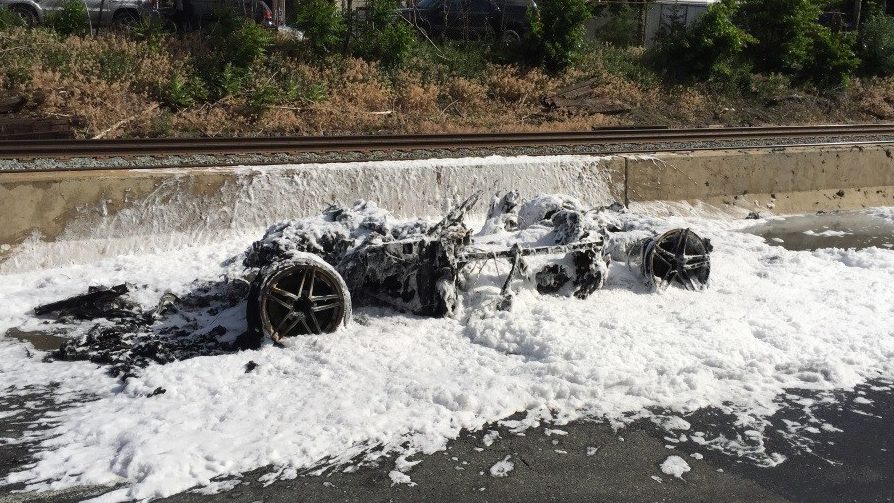

Porsche has been using magnesium in the construction of their sports cars since the 1960s, as it is a lightweight and easy metal to work with. It provides weight savings benefits in heavier pieces like engine and transmission cases. Porsche currently uses Magnesium in the new Panamera’s door structures, 911 Cabriolet top frames, and the GT3 RS has a magnesium roof to reduce the center of gravity. For certain components, especially large stressed pieces like the GT3 RS roof panel, it’s even lighter than using Carbon Fiber. According to Frank Weismann, Porsche’s Product Experience Manager, “the high cost of carbon fiber and the high amount of effort regarding the production and paint process in multiple steps, including several levels of polishing, result in carbon fiber pieces for the exterior being very expensive. The magnesium roof is cheaper than a comparable carbon fiber roof, and it is also an estimated 700 grams or 24 percent lighter.”
So what is the problem? Well, Magnesium isn’t necessarily any easier to ignite than many other automotive materials, but it burns a whole hell of a light hotter and faster. Once ignited, magnesium will burn at a heat of more than 5000 degrees fahrenheit. Putting off that kind of heat will easily melt aluminum the aluminum or steel found elsewhere in the car. That kind of heat is enough to immediately break a water molecule into its Hydrogen and Oxygen components, both of which are highly combustable. Further, mg is harder to extinguish, as the standard fire extinguishers are ineffective. An mg fire requires sand or dry powder to be put out, which many fire trucks do not carry. All of this being said, vehicle fires are by-and-large rare these days, and as we said earlier Magnesium isn’t very easy to ignite without an already serious vehicle fire. Personally, I’m happy to reap the benefits of a lighter car and a lower center of gravity. If something goes bad enough that your Porsche does ignite, perhaps the best idea is to keep a fire extinguisher on hand. Failing that, the second best option is to just get out of the car as quickly as possible and stand aside watching it burn. Insurance will sort it out.
For a deeper dive into the subject, and more of the science behind it, check out Kamil Kaluski’s recent post on Hooniverse.com. I’m convinced he included this picture of a 1973 911 Targa just to make me cry.
